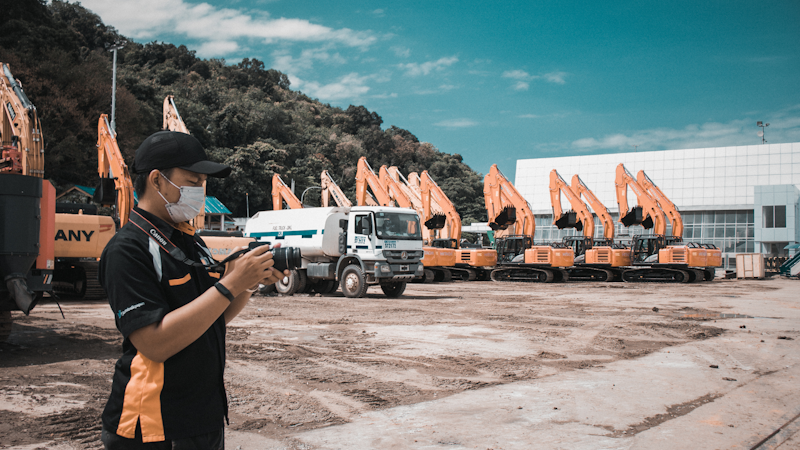The ins and outs of temporary full expensing: How it works and who can access it
Temporary full expensing is a federal government tax initiative that’s designed to help businesses cope financially with the impact of COVID-19 restrictions. Read on to find out everything you need to know about temporary full expensing, including answers to FAQs.
How does temporary full expensing work?
Temporary full expensing allows eligible businesses to claim the full cost of any eligible new or second-hand asset as a tax deduction in the financial year that it’s bought or improved.
Previously, these business assets had to be progressively depreciated over their estimated useful life, which resulted in a lower immediate tax deduction than the temporary full expensing scheme provides.
For example, instead of claiming a portion of your assets value each year as tax deduction, you can claim the full amount in one year. Claiming a $100,000 tax deduction for the value of an asset in one year means that your taxable income is reduced by that amount — which could amount to significant tax savings!
What are the business eligibility requirements for temporary full expensing?
Your business must have an aggregated turnover that’s less than $5 billion to be eligible to fully expense the cost of new eligible depreciating assets. Alternatively, your business must have had an annual income that was less than $5 billion for the 2018/2019 financial year.
The depreciating asset must have been bought between 7 October 2020 (when the temporary expensing scheme was introduced) and 30 June 2022 (when it is scheduled to end).
If you are buying a second-hand asset, your business must have an annual turnover that’s less than $50 million to be eligible for the temporary full expensing scheme.
What assets can you claim under temporary full expensing?
Any asset that you use for your business can be claimed if you meet one of the business eligibility requirements. However, if an asset is bought for both business and private use, you can only claim the business use portion of the asset’s cost.
Can you still claim depreciation on eligible assets over a number of years?
Yes, you can still depreciate your eligible assets over several years in the following circumstances:
- For assets bought outside of the temporary full expensing eligibility period (i.e. before 7 October 2020 and after 1 July 2022).
- If your business turnover or income makes you ineligible for the temporary full expensing scheme.
- If you voluntarily decide to opt-out of the scheme and depreciate the asset over several years instead.
You can choose which depreciating method you use on an asset by asset basis. Depreciation can be claimed in portions over a number of years rather than claiming the lump sum in the year the asset was bought. For example, a $100,000 asset could be depreciated over ten years meaning $10,000 could be claimed as a tax deduction each year. This can help reduce the tax liability of future years.
The different methods of depreciation are:
- Straight line (or prime cost). The asset decreases in value evenly over its effective life. For example, an asset with an effective life of 10 years and a value of $100,000 will depreciate by $10,000 per year.
- Diminishing value. Under this method, the asset decreases in value more at the beginning of its effective life and reduces as it ages. So the amount of deprecation you can claim is larger in the earlier years.
To find the best depreciation strategy for your business, it’s a good idea to get tax advice from a professional.
How much tax will I save under the depreciation method?
This depends on your business structure. Different types of businesses are taxed at different rates. The most common business structures in Australia are sole traders, partnerships and companies.
If you operate as a sole trader or partnership, you pay tax at your marginal rate. The more you earn, the more tax you pay. The majority of taxpayers earn between $45,000 and $120,000 and fall in the 32.5% tax bracket. If you’re in this bracket and deduct the purchase price of an asset under temporary full expensing, the asset will cost you 32.5% less once you factor in the tax deduction.
If your business is a company, the tax rate is 25% if your annual turnover is less than $50 million. This means that if you deduct the purchase price of an asset under temporary full expensing, the asset will cost you 25% less after claiming your tax deduction.
What is the difference between temporary full expensing and the instant asset write-off scheme?
The temporary full expensing scheme is an enhancement of the instant asset write-off scheme that was in place for business assets bought before 31 December 2020.
The bottom line
Temporary full expensing allows you to claim the full amount of depreciation in the year you buy an eligible asset. It basically gives you a government subsidy (i.e. a tax deduction) to lower the cost of buying new business assets. If you’re thinking about upgrading your assets, it could be a smart move to take advantage of the scheme before it ends on 30 June 2022.
If you’re looking into Temporary Full Expensing, you may want to consider your options on how you can access these initiatives.
Earlypay lends a helping hand to businesses across Australia with equipment financing for SMEs and invoice financing of unpaid invoices. From smaller start-ups to large enterprises, Earlypay may be able to help your business not only improve its cash flow but be able to redirect much-needed funds to areas of your business that really need it.
If you think your business can benefit from Earlypay's finance offerings and would like to find out more, please contact our helpful team today on 1300 760 205.

